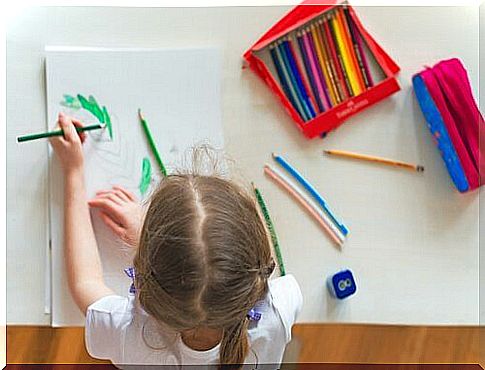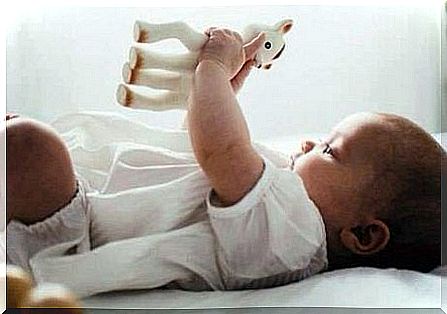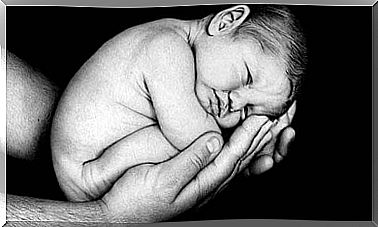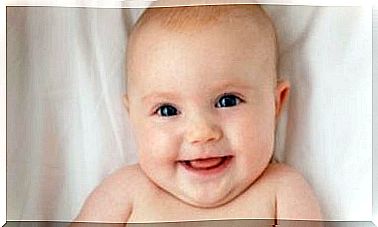How To Raise The Development Of Fine Motor Skills

To encourage the development of fine motor skills at an early age will help your child to, for example, hold a brush and paint.
Fine motor skills are movements that require the use of the small muscles in our hands and arms. They allow us to perform movements with higher precision and accuracy.
These abilities develop gradually over the years with the help of stimulation.
As children grow up – under normal circumstances – they encounter many opportunities to develop their fine motor skills. How? By exploring the world around them by touching things, touching them, releasing them, etc.
From an early age, children begin to grasp everything that is within reach to discover its texture – only out of simple curiosity.
At a later stage, infants begin to play with these objects. They throw them away, pick them up, hit them on the table, and so on.
As this happens, children begin to train the muscles in their hands and forearms.
This in turn improves the precision with which they grab objects. In addition, grabbing objects and releasing them increases children’s control of their own strength.
Activities that promote fine motor skills
- Draw
- Writing with a pen
- Cut and glue
- Sew or sew with thread
- Use a perforator
- To engage in napkin folding / origami
- Cast with clay or play with clay
- Other similar activities

Why are fine motor skills so important?
Some of the first signs of developing fine motor skills in infants are when they begin to grasp, hold, and move objects.
With the right stimulus, and over time , children will learn to hold a chalk and draw on a piece of paper. Your child will progressively acquire the skills required to make drawings, cut paper, and so on.
Of course, you should always monitor when your child uses scissors, and make sure the scissors are safe for small hands.
Each time children use their hands to perform a task, they improve their eye-hand coordination. This is especially important when your child starts drawing, painting, reading and writing.
These are activities that your child will use for the rest of his or her life, at school, at work and in other daily situations.
Letting your child play with crayons or scribble on a piece of paper at an early age is not the only way to stimulate good motor development.
Let your child explore the world freely, especially objects (while making sure it is harmless!). This enables children to advance faster and also gain a healthy self-confidence.
Signs of the development of fine motor skills
When children are born, they have little or no control over their limbs or over their own strength. But as soon as at 8 weeks, newborns begin to stretch their arms a little, move them and hit.
This is part of a child’s natural development – especially for touch.
At 5 months of age, children can grab an object properly. Step by step, the child reaches the stage where he can use his whole hand and even his thumb.
They pick up toys and experiment with everything that happens when it releases them, hitting them and shaking them.
At 12 months, children have greater control over their hands and are much more agile. This allows them to play with different toys (stuffed animals, legos, etc.) and turn the pages of a book.
At this age, a child can hold a pencil or chalk and draw and scribble.
Fine motor skills allow children to write and perform other activities that they can use for the rest of their lives.
Activities that increase the development of fine motor skills in infants
Give your child as much freedom as possible to explore the world around it. This is a way to naturally contribute to the development of fine motor skills. Of course, young children require continuous supervision by an adult.
However, it is important that you give your child a safe environment that offers opportunities to use both hands and fingers.
Keep play clay on hand
It may be hard to believe, but play clay helps children strengthen the muscles in their fingers.
Hugging, stretching and shaping the clay helps your child develop their motor skills and enjoy a sensory experience while having fun.
Create murals in the tub
Playing is not just a way for children to learn on a cognitive level. It is also the main contributor to the development of children’s motor development and coordination. To help your child, you can cut different divr from foam material.
During the bath, you can let your child hold these divr against the walls of the bathtub. Your child will have fun and use their artistic creativity while splashing around in the bathtub.
Finger color
Finger paint is an excellent way to improve fine motor development and also coordination in children. Simply give your child the colors and a surface to smear on (a wall, a sheet of paper or another object) and let your imagination take over.
Playing with water
Squeezing a sponge or filling an empty container with water are easy ways to strengthen the muscles in your baby’s hands. You can make these activities even more fun by adding bubbles or food coloring to the water.









